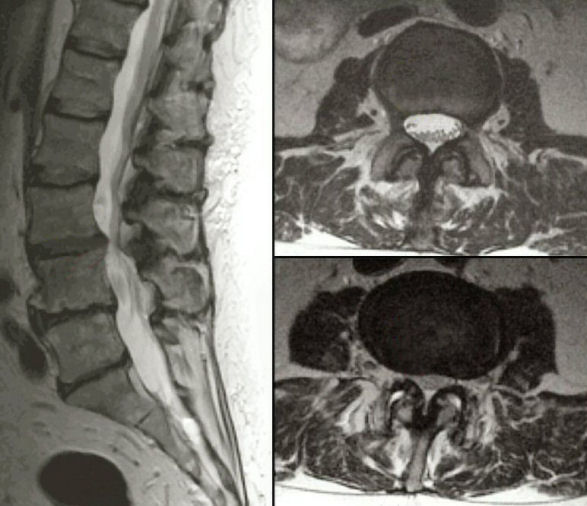
|
A 62 year-old man complained of pain in the back, buttocks and thighs after walking two blocks. The pain was relieved with sitting, but not standing. |

![]()
![]()
| Lumbar Spinal Stenosis:
T2-weighted MRI of the Lumbar
Spine; (Left) Mid-sagittal view; (Right Top) Axial scan at the mid-L3 level;
(Right Bottom) Axial scan at the L3-L4 disk level. Note the central canal stenosis at
the L3-L4 disk level. Contrast the two axial scans - in the upper scan
one can clearly visualize the CSF (which is bright) and the nerve roots of the cauda equina within the thecal sac,
whereas in the lower scan, no CSF is seen and the nerve roots are
clearly compressed. Lumbar spinal stenosis frequently presents with so-called "neurogenic claudication," whereby the patient experiences back and radicular pain with prolonged standing or walking. In contrast to vascular claudication, neurogenic claudication is only relieved by sitting, whereas symptoms from vascular claudication improve if the patient rests either in the standing or sitting position. Spondylosis is a degenerative condition caused by a combination of disk disease, ligament hypertrophy and facet/bony hypertrophy. |
Revised
11/22/06
Copyrighted 2006. David C Preston